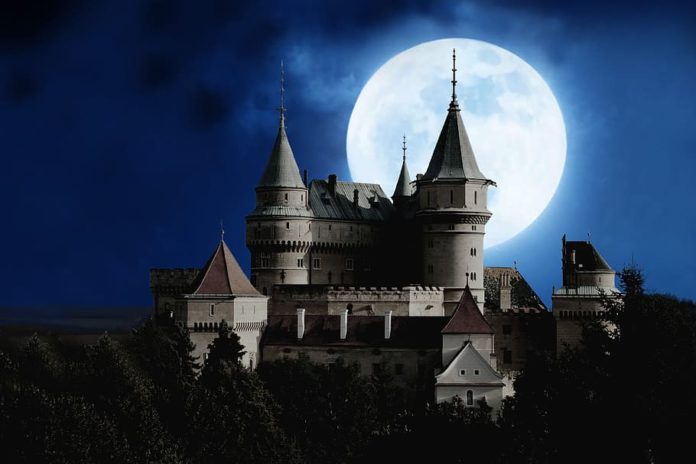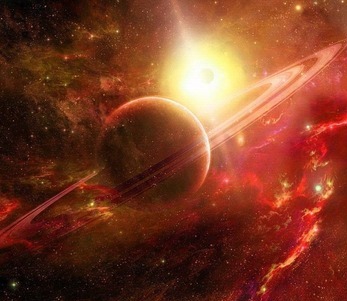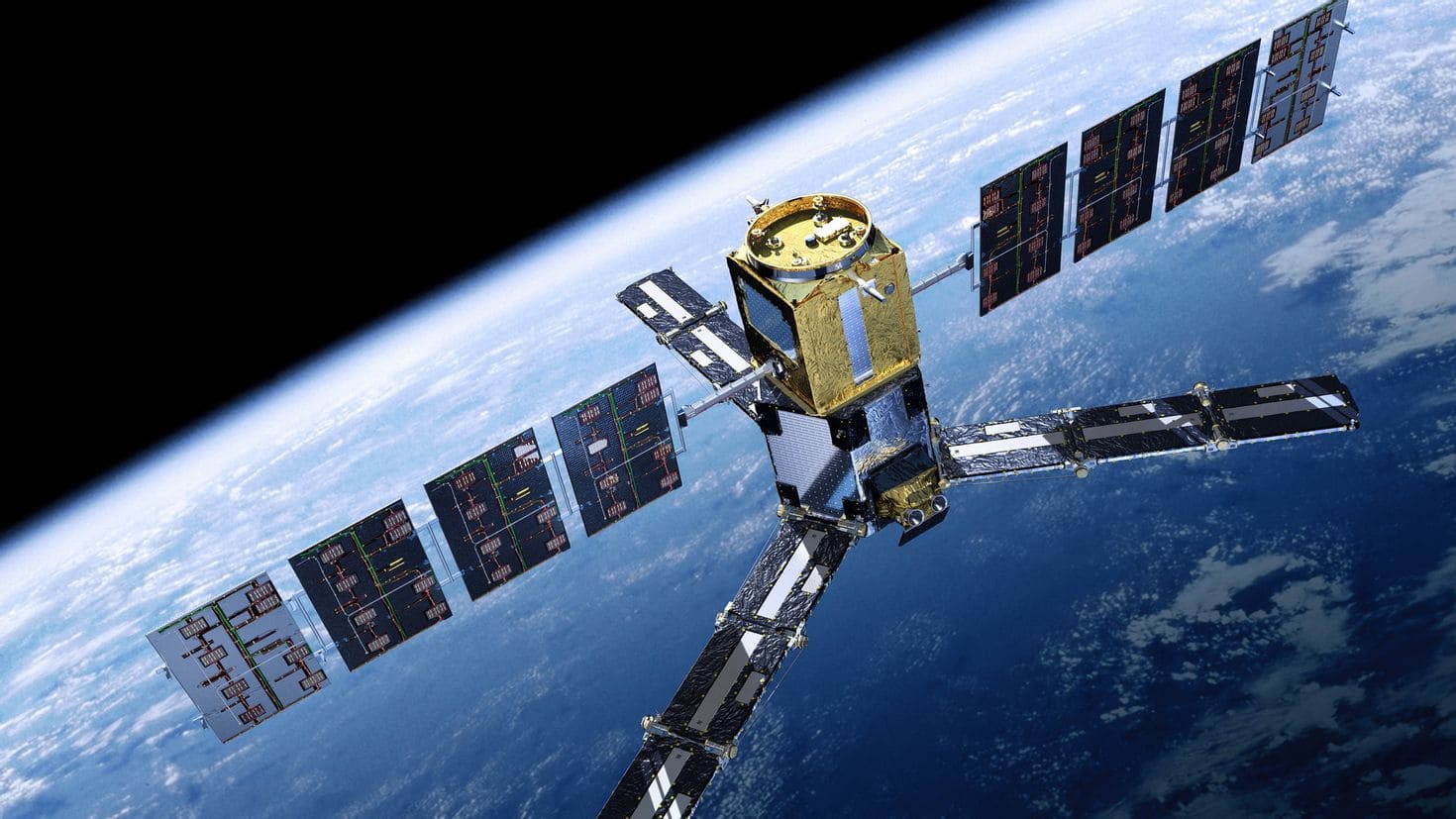Explore the mysteries and wonders of the full moon!
Since ancient times, the full moon has been shrouded in a halo of mystery and magic. Its soft light, flooding the night landscapes, cannot but touch the imagination and the human heart. No wonder the moon was so often poetized, mystical powers were attributed to it. Even in our rational times, the full moon continues to excite minds and arouse interest in its mysteries.
In this article, we will try to figure out what happens during the full moon, what amazing phenomena can be observed these days and whether there is a rational grain in all this.
What is a full moon?
The full moon is the phase of the Moon when it is on the other side of the Earth in relation to the Sun and faces us with a fully illuminated disk. That is, the Sun, Earth and Moon line up in the same line in the specified order.
The full moon comes every 29.5 days, when the Moon completes another revolution around the Earth. The duration of the phase itself is about 3 days, during which we can observe an absolutely round lunar disk.
The position of the moon relative to the horizon during a full moon varies depending on the time of year. For example, winter full moons always occur quite high above the horizon, while summer ones are low.
The beautiful sight of a full moon in clear weather attracts many astronomy enthusiasts. Nevertheless, scientists are interested in this phenomenon not only from an aesthetic, but also from a practical point of view. Because it is during the full moon that a number of interesting anomalies are observed.
How the full moon affects nature and humans
Since ancient times, people have attributed mystical properties and supernatural influence on all living things to the full moon. It is not surprising, because even with a superficial observation, you can notice that a lot of strange things happen during the full moon period.
Plants at this time sometimes show increased growth and flowering activity. Seasonal instincts associated with reproduction and migration are often exacerbated in animals and insects.
There are legends among sailors that the tides increase significantly during the full moon. Fishermen have a belief that the full moon can affect the catch – these days it either increases sharply or falls.
Even people have behavioral changes during the full moon period. For example, there is increased excitability, insomnia, exacerbation of chronic diseases. Social workers and police confirm that the number of offenses, accidents, and suicides during full moons is naturally increasing.
So is this a coincidence, or does the Moon really have an effect on all living things? Scientists are trying to answer this question.
Attempts at scientific explanation
The first hypothesis that comes to mind when trying to give a rational explanation for the phenomena of the full moon is the influence of moonlight. After all, the full moon is a pretty powerful natural source of illumination at night.
However, if we analyze the amount of moonlight hitting the Earth’s surface, the conclusion is not in favor of this version. Even on the night of the full moon, the illumination from the Moon is 400,000 times weaker than the daytime illumination from the Sun! In fact, the full moon is just a slightly muted night landscape.
Then maybe it’s gravity? After all, the tides are caused precisely by the lunar attraction. Again, no – the tidal force of the Moon during the full moon is even weaker than during the new moon, when the lunar disk is not visible.
Neither the light nor gravity hypotheses convincingly explain the strangeness of the full moon. Then what is it?
According to a number of scientists, the reason lies in psychology. People subconsciously believe that the full moon should somehow influence them, and they themselves unconsciously change their behavior to meet expectations.
As for anomalies in the behavior of animals and plants, so far most biologists are inclined to believe that these are rather seasonal cycles that coincide in time with the lunar phases.
However, it is too early to completely exclude the influence of the full moon. Perhaps modern science does not yet have the data and techniques to capture the subtle relationships between space and life on Earth. Therefore, the study of the phenomena of the full Moon continues.
Amazing astronomical phenomena of full moons
In addition to trying to unravel the nature of the full moon’s effect on all living things, scientists observe other interesting astronomical phenomena that occur during this lunar phase.
One of such rare and exciting sights is a total lunar eclipse. It occurs when the Earth falls between the Sun and the full Moon, and its shadow completely or partially hides the lunar disk from us.
Watching such a space show with your own eyes is unforgettable. Gradually, the Moon seems to “disappear” before our eyes, its surface acquires a mysterious dark copper hue. An eclipse of the full Moon can last for about an hour, and in exceptional cases – up to three hours.
Another rare visitor to the sky during a full moon is a comet bright enough to be discerned with the naked eye. The last such case took place in 2013 – when the full Moon was “accompanied” by the greenish glow of the tail of comet Lovejoy.
The full moon is also the most suitable time to observe the lunar halo – a kind of “rainbow circles” around the moon’s disk. This optical effect is created by the refraction of moonlight in numerous tiny ice crystals of high clouds.
Sometimes, during the full moon, you can witness colorful auroras. Their appearance in the sky at the same time as the full moon is a rather rare, but very effective combination.
As we can see, even if we discard all mysticism, the full moon in the sky itself is a unique and attractive phenomenon. During this phase, the moon and the surrounding space can be observed in all its glory.
Full Moon in the culture and traditions of peoples
Surprisingly, with such a rich history of observations and beliefs associated with the full moon, it does not have a generally accepted proper name. While many other phases and even individual lunar seas have their own names (for example, “Straw Moon”).
But we can talk about a rich cultural heritage generated by people’s faith in the mysterious power of the full moon over the centuries. She inspired artists and writers, poems and legends were dedicated to her.
The full moon was often considered a mystical time when the line between the world of living and otherworldly forces is blurred. Many ancient rites and rituals were conducted precisely by the light of the full moon.
French peasants had a belief that those sleeping on a moonlit night had prophetic dreams, so before going to bed they put their shoes in the yard “to dry” – so that the Moon would fill them with dreams about the future harvest.
Modern holidays like Rosh Hashanah among Jews or Tsagan Sar in Mongolia and Tuva are also associated with the full moon. Thus, the full Moon still plays an important role in the cultural life of peoples.
Conclusions
So, what do we have? The full moon really absorbs a lot of mysteries and wonders. A scientific explanation for far from all of its phenomena has been found so far. There is still room for speculation and hypotheses.
At the same time, the full Moon is just another phase of the Earth’s natural satellite, which can be logically explained from the point of view of astronomy and cosmonautics.
Most likely, the truth is somewhere in between. Who knows, maybe full moons really have an energetic or other effect on all living things… But these effects are so subtle, elusive, that they have so far eluded the instruments of scientists.
In any case, even the most sober-minded skeptic will not be able to resist the magic of the full moon.



